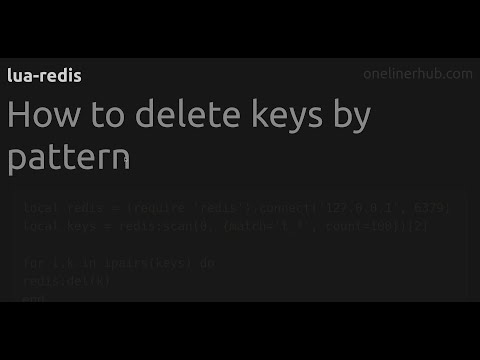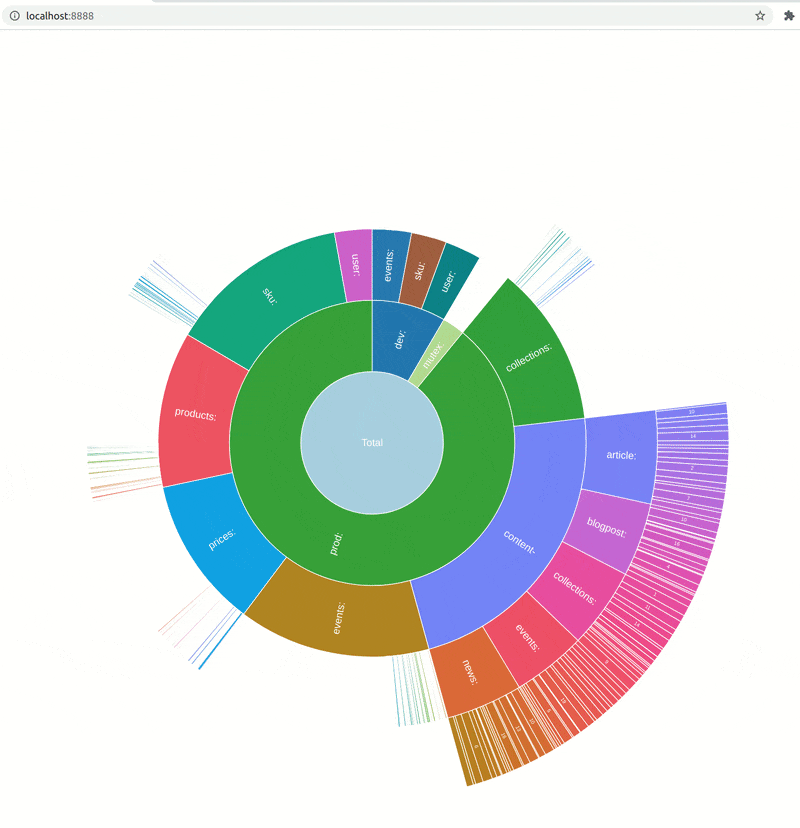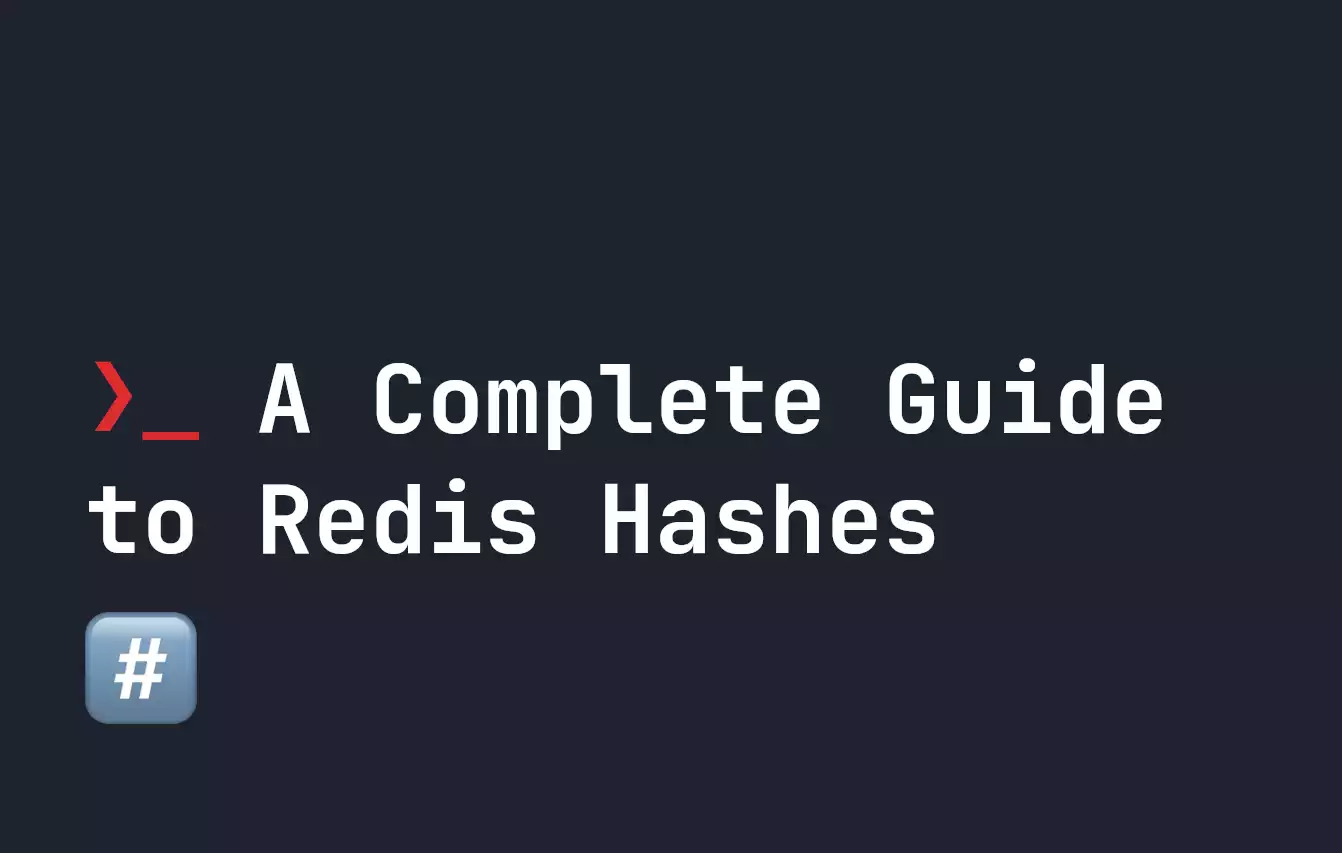Delete Keys By Pattern Redis
Introduction to Redis and the Concept of Keys
In Redis, keys are crucial to organize and access the data stored in the system. A Redis key is a string that serves as a unique identifier for a given value. Keys can be of various types, including strings, lists, sets, hashes, and more. They are not limited to a specific format or length, allowing flexibility in their usage.
Pattern Matching in Redis for Deleting Keys
Redis provides various mechanisms for performing operations on keys based on pattern matching. This allows users to target multiple keys that match a specific pattern and perform actions on them simultaneously. Redis supports wildcard characters such as “*”, “?” to specify patterns that match certain keys.
Using the DEL Command to Delete Keys by Pattern
The DEL command in Redis allows you to delete one or more keys from the database. While it primarily accepts individual keys as arguments, you can also make use of pattern matching to delete keys that match a particular pattern. By providing a pattern instead of a specific key, Redis will search for all keys that match the pattern and delete them.
Specifying Patterns Using Wildcards in Redis
Wildcards are special characters used in pattern matching to represent any number of characters or a single character. In Redis, two wildcards are commonly used:
– The asterisk (*) represents any number of characters (including zero).
– The question mark (?) represents a single character.
These wildcards can be combined with other characters to form complex patterns for matching keys.
Example Scenarios for Deleting Keys by Pattern
Let’s consider a scenario where you have a Redis database containing keys related to user sessions. These keys are prefixed with “session:” followed by a unique identifier for each user. If you want to delete all session keys corresponding to a particular user, you can use a pattern like “session:user_id” to match and delete all keys that start with “session:” followed by the specific user ID.
Deleting Keys by Pattern Using the SCAN Command
The SCAN command in Redis allows you to iterate over a large number of keys without blocking the server. It returns a cursor along with a batch of keys, which you can process and potentially delete. By combining the SCAN command with pattern matching, you can efficiently delete keys in batches that match a specific pattern.
Deleting Keys in Batches by Pattern with the Help of Lua Scripting
Redis also supports Lua scripting, allowing you to execute complex operations atomically on the server. You can leverage this feature to delete keys in batches that match a certain pattern. By writing a Lua script that combines the SCAN command with pattern matching, you can efficiently delete keys in chunks to avoid overwhelming the server.
Performance Considerations When Deleting Keys by Pattern in Redis
When performing operations on keys in Redis, especially when deleting keys by pattern, certain performance considerations should be kept in mind. Deleting a large number of keys at once can cause a temporary slowdown in Redis’s performance, as it needs to scan and delete each key individually. It is essential to balance the number of keys deleted in each batch to maintain optimal performance.
Best Practices for Safely Deleting Keys by Pattern in Redis
To safely delete keys by pattern in Redis, follow these best practices:
1. Carefully review the pattern: Make sure that the pattern accurately matches the keys you intend to delete. Incorrect patterns can lead to unintended key deletions.
2. Test in a non-production environment: Before executing the delete operation in a production environment, test it in a controlled environment to ensure it behaves as expected.
3. Monitor the system during deletion: Keep an eye on the Redis server’s performance and resource utilization while deleting keys by pattern. Ensure that the operation does not significantly impact the overall system.
4. Take backups if necessary: If the keys being deleted are critical or contain important data, consider taking backups before executing the delete operation.
FAQs
Q1. Can I delete keys by pattern using Redis in Node.js?
Yes, you can delete keys by pattern in Redis using the node_redis library in Node.js. By utilizing the DEL command with pattern matching, you can achieve this functionality within your Node.js application.
Q2. How can I delete keys by pattern in C# Redis?
In C#, you can use the StackExchange.Redis library to interact with Redis. To delete keys by pattern, you can leverage the RedisCommander class and issue the DEL command with the desired pattern. This allows you to delete multiple keys at once that match the specified pattern.
Q3. How to delete multiple keys in Redis?
To delete multiple keys in Redis, you can use the DEL command followed by the list of keys you want to delete. For example, DEL key1 key2 key3. Alternatively, you can use pattern matching with the DEL command to delete multiple keys that match a specific pattern.
Q4. How can I delete all keys with a prefix in Redis?
To delete all keys with a specific prefix in Redis, you can use the KEYS command to retrieve all keys that match the pattern, and then execute the DEL command on each of those keys. For example, KEYS “prefix:*” followed by DEL key1 key2 key3 …
Q5. How do I remove a key using Jedis in Redis?
In Jedis, a popular Redis client for Java, you can remove a key using the DEL command. You can create an instance of the Jedis class, and then use the del method to delete the desired key. For example, jedis.del(“myKey”).
Q6. How can I delete all keys in Redis?
To delete all keys in Redis, you can use the FLUSHDB command to delete all keys in the currently selected database. Another option is to use the FLUSHALL command, which deletes all keys from all databases.
Q7. How do I delete a key in Redis?
To delete a specific key in Redis, you can use the DEL command followed by the key you want to delete. For example, DEL myKey.
Q8. How can I remove a key in Redis using PHP?
In PHP, the Redis extension provides various methods to interact with Redis. To remove a key, you can use the del method of the Redis class and pass the key as a parameter. For example, $redis->del(“myKey”).
In conclusion, Redis provides powerful mechanisms to delete keys by pattern, allowing for efficient and flexible data management. Whether you are using Redis with Node.js, C#, or any other programming language, understanding these techniques and following best practices will enable you to safely and effectively delete keys by pattern in Redis.
How To Delete Keys By Pattern #Lua-Redis
Keywords searched by users: delete keys by pattern redis Redis delete keys by pattern nodejs, C# Redis delete keys by pattern, Delete multiple keys Redis, Delete all keys with prefix redis, Jedis remove key, Delete all key redis, Delete key Redis, Php redis remove key
Categories: Top 61 Delete Keys By Pattern Redis
See more here: nhanvietluanvan.com
Redis Delete Keys By Pattern Nodejs
Introduction:
Redis is an open-source, in-memory data structure store that is widely used for its blazing-fast performance and versatility. In Node.js applications, Redis is often employed to cache data, manage sessions, and handle various other tasks. One essential aspect of working with Redis is deleting keys based on a particular pattern, which allows developers to efficiently remove multiple keys at once. In this article, we will explore how to delete Redis keys by pattern in Node.js, providing a comprehensive guide for developers.
Deleting Redis Keys by Pattern in Node.js:
Deleting Redis keys by pattern in Node.js involves three main steps: connecting to the Redis server, identifying keys matching a particular pattern, and deleting those keys.
1. Connecting to the Redis Server:
To start working with Redis in Node.js, you first need to establish a connection with the Redis server. This can be done using the popular npm package, “redis.” Install the package using the command:
“`shell
npm install redis
“`
Next, import the package in your Node.js file:
“`javascript
const redis = require(‘redis’);
const client = redis.createClient();
“`
This code creates a Redis client and connects to the default Redis server running on localhost.
2. Identifying Keys Matching a Pattern:
Once connected to the Redis server, you can fetch keys based on a specific pattern using the `keys()` function provided by the Redis package. The `keys()` function accepts a pattern string as a parameter and returns an array of keys matching the pattern. Here’s an example:
“`javascript
const pattern = ‘user:*’;
client.keys(pattern, (err, keys) => {
if (err) throw err;
console.log(keys);
});
“`
In this code snippet, we are fetching all the keys that start with “user:” and logging them to the console.
3. Deleting Keys by Pattern:
After identifying the keys that match a particular pattern, the final step is to delete those keys from Redis. The `del()` function, also provided by the Redis package, is used to delete keys. Here’s how you can delete keys by pattern:
“`javascript
client.del(keys, (err, count) => {
if (err) throw err;
console.log(`${count} keys deleted.`);
});
“`
In this code, `keys` is an array of keys fetched using the `keys()` function. The `del()` function deletes the keys from Redis and returns the count of deleted keys.
FAQs:
Q1. Can I use wildcards or regular expressions in the pattern string?
Yes, you can use wildcards in the pattern string to match multiple keys. Redis supports the following wildcards:
– `*` matches any character sequence (including an empty one).
– `?` matches any single character.
– `[abc]` matches any character inside the brackets.
Q2. Can I delete keys from multiple Redis databases?
Yes, by default, the Redis client connects to the database with index 0. However, you can change the database index using the `select()` function provided by the Redis client. For example, to switch to database 1:
“`javascript
client.select(1, (err) => {
if (err) throw err;
// Delete keys here
});
“`
Q3. Are there any precautions to consider when deleting keys by pattern?
Yes, it’s crucial to be cautious while deleting keys by pattern, as it can have unintended consequences. Ensure that the pattern you specify only matches the keys you intend to delete. Consider using prefixes or other techniques to distinguish between different types of keys and avoid accidentally deleting the wrong keys.
Q4. Is it possible to delete keys in a Redis cluster?
Yes, you can perform key deletions in a Redis cluster by connecting to it using the `ioredis` package instead of the default Redis package. The syntax for deleting keys remains the same; only the client initialization changes.
Conclusion:
Deleting Redis keys by pattern in Node.js can significantly simplify the process of removing multiple keys efficiently. By following the steps outlined in this guide, you can confidently delete keys based on specific patterns, streamlining your Redis data management in Node.js applications. Remember to exercise caution and double-check your pattern before executing the deletion operation to prevent accidental data loss.
C# Redis Delete Keys By Pattern
Redis is an open-source, in-memory data structure store that is widely used as a database, cache, and message broker. One of its key features is the ability to manipulate data using patterns, allowing developers to perform bulk operations easily. In this article, we will dive deep into how to delete keys by pattern in Redis using C#.
Why Would You Delete Keys by Pattern?
There are several scenarios in which you might want to delete keys by pattern in Redis. For example, suppose you have a cache system in place and want to clear all the keys related to a specific entity. Instead of iterating through each key manually, you can leverage the pattern matching functionality to delete all matching keys in one go. This can save a significant amount of time and effort, especially when dealing with a large number of keys.
Using StackExchange.Redis Library
To interact with Redis in C#, we can use the popular StackExchange.Redis library. This library provides a high-performance and easy-to-use API for working with Redis. To delete keys by pattern, we can leverage the `SCAN` command available in Redis.
The `SCAN` command returns a cursor-based iterator that allows us to iterate over all keys matching a specified pattern. We can combine this command with the `DEL` command to delete the matching keys. Here is an example code snippet that demonstrates how to delete keys by pattern using C# and StackExchange.Redis:
“`csharp
var redis = ConnectionMultiplexer.Connect(“localhost”);
var database = redis.GetDatabase();
var pattern = “prefix:*”; // Pattern to match
var keysToDelete = new List
long cursor = 0;
do
{
var scanResult = database.Execute(“SCAN”, cursor.ToString(), “MATCH”, pattern, “COUNT”, “100”);
cursor = (long)scanResult[0];
var keys = (RedisValue[])scanResult[1];
keysToDelete.AddRange(keys);
} while (cursor != 0);
if (keysToDelete.Count > 0)
{
database.KeyDelete(keysToDelete.ToArray());
}
“`
In this example, we first establish a connection with the Redis server using `ConnectionMultiplexer.Connect()`. Then, we obtain a reference to the desired Redis database using `GetDatabase()`. We define the pattern we want to match, in this case, “prefix:*”. We start with a cursor value of 0 and iterate over all keys matching the pattern using the `SCAN` command. The keys are added to the `keysToDelete` list. Finally, we use the `KeyDelete()` method to delete all the keys matching the pattern.
FAQs
Q1: Can I delete keys in Redis without specifying a pattern?
A1: Yes, you can delete keys without specifying a pattern by using the `DEL` command directly. For example, you can use `database.KeyDelete(“key1”, “key2”, “key3”)` to delete multiple keys.
Q2: Is there a performance impact when deleting keys by pattern in Redis?
A2: Deleting keys by pattern using the `SCAN` command can have a performance impact, especially when dealing with a large number of keys. However, it is generally more efficient compared to iterating over each key manually.
Q3: Can I use regular expressions to define the pattern?
A3: No, Redis does not support regular expressions for pattern matching. However, Redis provides a set of wildcards that you can use in your patterns, such as “*”, “?” and “[]”.
Q4: Are there any risks involved in deleting keys by pattern?
A4: Yes, it is crucial to be careful when deleting keys by pattern, as it can result in unintended data loss if not handled properly. Always double-check your pattern before executing the delete operation.
Q5: Is there a way to delete keys by pattern asynchronously?
A5: Yes, you can use the asynchronous methods provided by StackExchange.Redis library to delete keys by pattern asynchronously. For example, you can use `database.KeyDeleteAsync()` to delete keys asynchronously.
In conclusion, using C# and the StackExchange.Redis library, you can easily delete keys by pattern in Redis. This feature can be incredibly useful when managing large datasets or when implementing cache clearing mechanisms. However, it is crucial to exercise caution and thoroughly test your patterns before executing delete operations to avoid unintended data loss.
Images related to the topic delete keys by pattern redis

Found 10 images related to delete keys by pattern redis theme















Article link: delete keys by pattern redis.
Learn more about the topic delete keys by pattern redis.
- How to atomically delete keys matching a pattern using Redis
- Redis Delete Keys with Prefix or Wildcard – Linux Hint
- Find and Delete multiple keys matching by a pattern in Redis
- Delete keys by pattern in Redis – OneLinerHub
- Redis delete all keys with prefix – Easy way to do it – Bobcares
- DEL – Redis
- How to delete multiple azure redis keys by pattern using Redis …
- Ways to delete multiple keys from Redis cache. – Medium
See more: https://nhanvietluanvan.com/luat-hoc